AMD AM1 Kabini Part 2: Athlon 5350/5150 and Sempron 3850/2650 Tested
by Ian Cutress on May 29, 2014 2:00 PM ESTCPU Synthetic Benchmarks
Content Creation - Cinebench
Based on MAXON’s CINEMA 4D animation software, Cinebench is used to determine the CPU and graphics performance via OpenGL. The software has gone through many iterations over the years, and here we use versions 10, 11.5 and 15 to compare single-threaded and multi-threaded CPU performance. As the generations increase, the software becomes more multithread aware and scales better, however for consistency with older results we keep the version 10 results in our database.
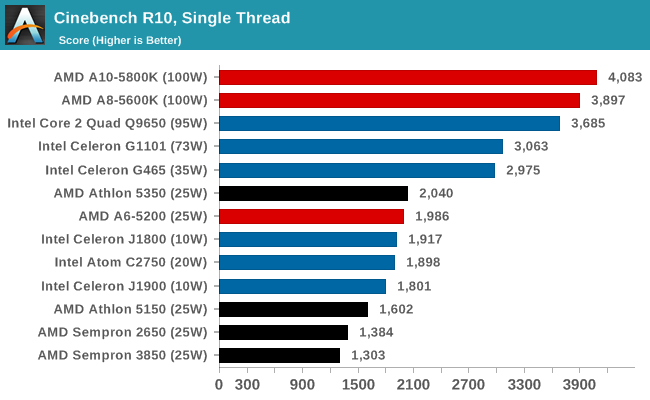
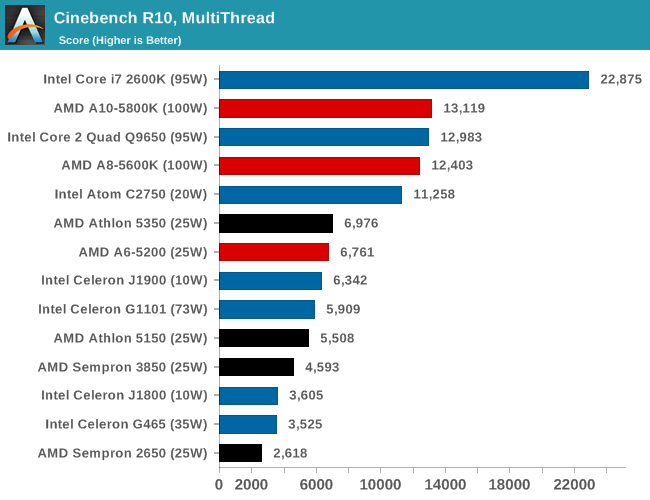
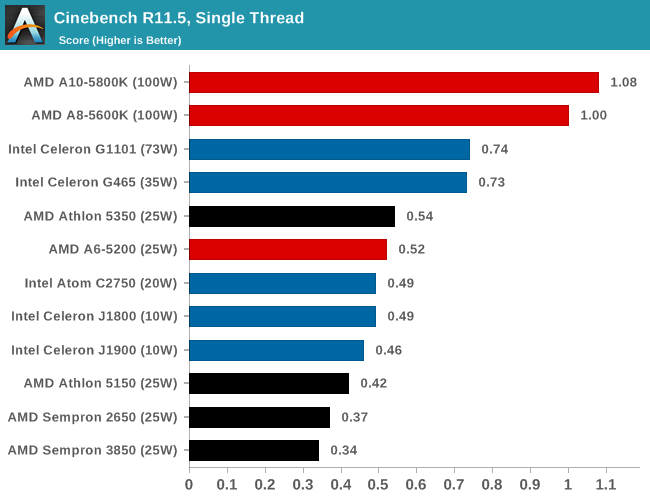
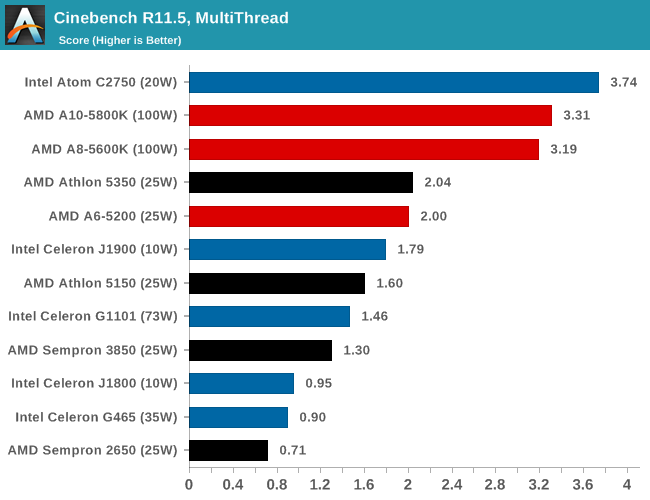
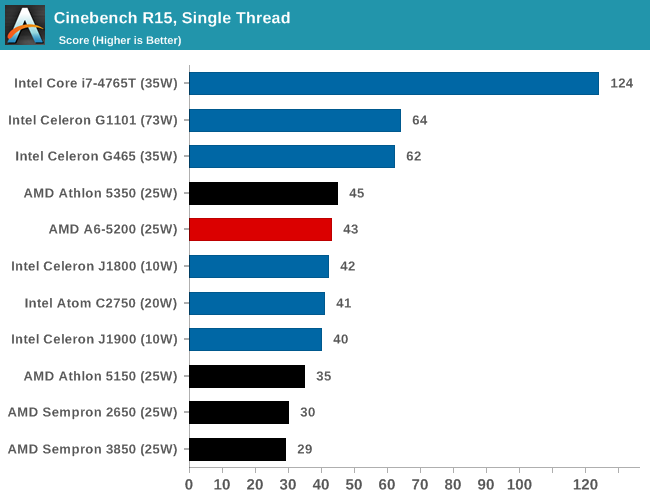
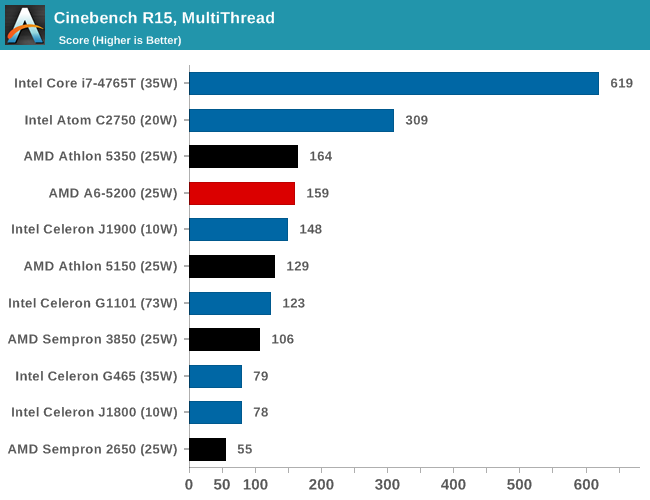
Synthetic – 7-Zip 9.2: link
As an open source compression tool, 7-Zip is a popular tool for making sets of files easier to handle and transfer. The software offers up its own benchmark, to which we report the result.
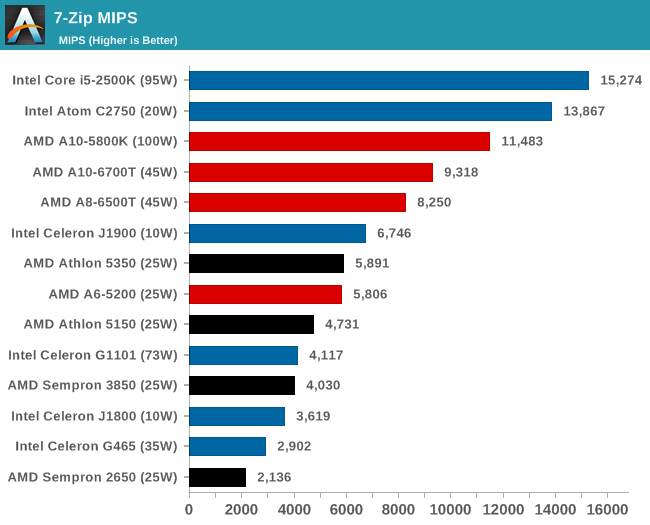
Rendering – PovRay 3.7: link
The Persistence of Vision RayTracer, or PovRay, is a freeware package for as the name suggests, ray tracing. It is a pure renderer, rather than modeling software, but the latest beta version contains a handy benchmark for stressing all processing threads on a platform. We have been using this test in motherboard reviews to test memory stability at various CPU speeds to good effect – if it passes the test, the IMC in the CPU is stable for a given CPU speed. As a CPU test, it runs for approximately 2-3 minutes on high end platforms.

Console Emulation –Dolphin Benchmark: link
At the start of 2014 I was emailed with a link to a new emulation benchmark based on the Dolphin Emulator. The issue with emulators tends to be two-fold: game licensing and raw CPU power required for the emulation. As a result, many emulators are often bound by single thread CPU performance, and general reports tended to suggest that Haswell provided a significant post to emulator performance. This benchmark runs a Wii program that raytraces a complex 3D scene inside the Dolphin Wii emulator. Performance on this benchmark is a good proxy of the speed of Dolphin CPU emulation, which is an intensive single core task using most aspects of a CPU. Results are given in minutes, where the Wii itself scores 17.53; meaning that anything scoring better than this is faster than an actual Wii for processing Wii code, albeit emulated.











87 Comments
View All Comments
haardrr - Saturday, May 31, 2014 - link
but the i7-4675t is a 35 watt processor... does that mean that the i7-4675t competes with the 5350?Namisecond - Monday, June 9, 2014 - link
They are a lot closer in power usage than you might think, both idle and loaded.BMNify - Saturday, May 31, 2014 - link
why would you use a dual core anything to day ! , and these chips do not have AVX simd so are underpowered before you even start in 2014/15BMNify - Saturday, May 31, 2014 - link
also unless you are a large org looking to finally do mass signage in bulk then again these chips/soc are not worth it to day, if you want a few web enabled apps per Soc device then look to the http://cdn.liliputing.com/wp-content/uploads/2014/... for instance , now that will be worth the cash for something you want to actually buy on a whimhttp://liliputing.com/2014/05/crowdfunding-2-incre...
Crowdfunding: 3 incredibly tiny PC modules starting at just $15
silverblue - Saturday, May 31, 2014 - link
If you're including Kabini in that statement, the Jaguar architecture does indeed support AVX. In fact, it supports pretty much everything Piledriver does.BMNify - Saturday, May 31, 2014 - link
i wasn't, but again why settle for only old AVX , when you can have AVX2 AND a free hardware encoder and decoder that works for when you just want a quick conversion (or to make a new correctly time coded V/A fixed rate) http://forum.doom9.org/showthread.php?t=162442 Intel QuickSync Decoder - HW accelerated FFDShow decoder with video processing before you do the real x264 high visual quality encodeAlexey291 - Monday, June 2, 2014 - link
Why wouldn't you?The fewer the number of cores required to deliver equivalent performance the better.
Besides dual core cpu's are perfect for certain very real world applications - such as for example me typing out this message on a chromebook sporting a dual core haswell celeron.
eanazag - Tuesday, June 3, 2014 - link
Agree. I was looking for a cheap Haswell Pentium. Maybe you can compare in the bench.DanNeely - Thursday, May 29, 2014 - link
The graphs in this article leave a lot to be desired. The huge number of high power/performance chips only add clutter; at most 2 or 3 representative examples from each major vendor would suffice to show these processors are very low end performing. Alternately, use the color coding not to call out AMD vs Intel; but to highlight the 4 AMD chips being reviewed along the with the J1800/1900 celerons they're nominally competing with.Ian Cutress - Thursday, May 29, 2014 - link
I'll duplicate the graphs (after I eat dinner!) and limit the results data within a narrow band, and offer the option to switch between both.